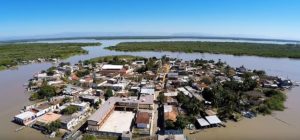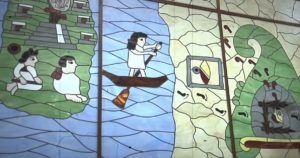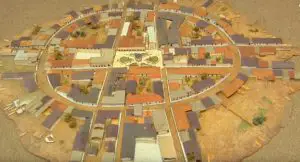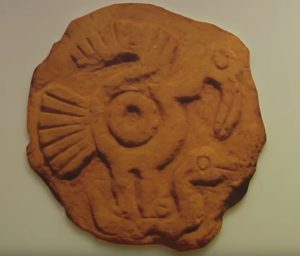Podcast: Play in new window | Download
Subscribe: Apple Podcasts | RSS
 The date was December 1, 2020. Mexican Secretary of Tourism, Miguel Torruco Marqués, announced that several locations would be added to Mexico’s esteemed list of “Pueblos Mágicos,” or “magical towns.” According to Wikipedia, the Programa Pueblos Mágicos is,
The date was December 1, 2020. Mexican Secretary of Tourism, Miguel Torruco Marqués, announced that several locations would be added to Mexico’s esteemed list of “Pueblos Mágicos,” or “magical towns.” According to Wikipedia, the Programa Pueblos Mágicos is,
“an initiative led by Mexico’s Secretariat of Tourism, with support from other federal agencies, to promote a series of towns around the country that offer visitors special experiences because of their natural beauty, cultural richness, traditions, folklore, historical relevance, cuisine, art crafts, and great hospitality. It is intended to increase tourism to more localities, especially smaller towns in rural areas. The program promotes visiting small, rural towns, where visitors may see indigenous crafts, spectacular landscapes and other attractions. The Government created the ‘Pueblos Mágicos’ program to recognize places across the country that have certain characteristics and traditions that make them unique, and historically significant, offering magical experiences to visitors. A ‘Magical Village’ is a place with symbolism, legends, history, important events, festivals, traditions, great food, and enjoyable shopping, day-to-day life – in other words, ‘magic’ in its social and cultural manifestations, with great opportunities for tourism. Every Pueblo Mágico offers a special experience to the visitor.”
Added to the list of Pueblos Mágicos in December of 2020 was a place that was on the list before back in the year 2001 but had been taken off a few years later, a small, unique town not known to many people throughout Mexico. Its formal name is Mexcaltitlán de Uribe, usually shortened to just Mexcaltitlán. The town is located on a round artificial island in a lake bearing its same name, in the Mexican state of Nayarit, close to the Pacific coast. Home to some 800 people, the island city of Mexcaltitlán floods periodically during which boats are used to traverse the island which is only about 1,100 feet across. The flooding, along with the dependence on boats overall has earned Mexcaltitlán the nickname “La Venecia Mexicana,” or “The Mexican Venice.” From the air, the town looks like a compass rose, with two main roads making the shape of a cross dividing Mexcaltitlán on north-south and east-west axes, with smaller roads radiating outward from the center.  The island is home to a church, a hospital, a school, government offices and many colorful houses. People on the island fish for a living or work plots of land on the mainland. The rich soils nearby yield fine tobacco prized throughout Mexico and other typical Mexican staple crops, such as corn. There are very few towns and cities nearby thus making Mexcaltitlán somewhat remote, hard to access and relatively unknown. Although Mexcaltitlán is located 530 miles northwest of Mexico City, some scholars believe that this place has a direct connection to pre-Conquest Mexico City, the Aztec capital of Tenochtitlán. Founded almost 1,000 years ago, many researchers theorize that Mexcaltitlán may be the mythical point of origin of the Aztec people, a place called Aztlán in the legends and religious traditions of the Aztecs.
The island is home to a church, a hospital, a school, government offices and many colorful houses. People on the island fish for a living or work plots of land on the mainland. The rich soils nearby yield fine tobacco prized throughout Mexico and other typical Mexican staple crops, such as corn. There are very few towns and cities nearby thus making Mexcaltitlán somewhat remote, hard to access and relatively unknown. Although Mexcaltitlán is located 530 miles northwest of Mexico City, some scholars believe that this place has a direct connection to pre-Conquest Mexico City, the Aztec capital of Tenochtitlán. Founded almost 1,000 years ago, many researchers theorize that Mexcaltitlán may be the mythical point of origin of the Aztec people, a place called Aztlán in the legends and religious traditions of the Aztecs.
Scholars first look to the name of this new pueblo mágico, “Mexcaltitlán.” The name includes three words or pieces of words that come from languages related to Nahuatl, the language of the Aztecs, or some other Nahua derivative. When taken apart, Mexcaltitlán, has these three words: “Mexica,” “calli” and “titlán.” Mexcaltitlán. The word “Mexica” is what the Aztecs used to call themselves. “Calli” in many Nahua languages and dialects, and in other languages in ancient Mexico, always means “house” or “building.” The suffix “titlán” is always used to denote a sense of place in Nahuatl. So, to many researchers “Mexcaltitlán” literally means, “The place of the Aztec house.” Seeing that this town on this small artificial island is well over 500 miles from the heart of the old Aztec Empire, this is a curious clue that the builders may have left behind.
 The indigenous Cora people were found living on the island town of Mexcaltitlán in the mid-1500s when the Spanish arrived in the area. The Coras spoke a Uto-Aztecan language similar to the Aztecs, although the area was far outside the bounds of the Aztec Empire. The early Spanish explorers who made it to this part of Nayarit documented the legend of the founding of the town of Mexcaltitlán, which is eerily similar to the founding of the Aztec capital of Tenochtitlán, although it happened centuries before. Here’s the story: A tribe of wanderers arrived at the edge of a lake. On a rock outcrop in the middle of the lake they saw a bright white heron standing there with a snake in its mouth. The nomadic people took this as a sign from their main god to settle down and to end their generations of wandering. The people swam out to the rock outcrop and made a little settlement there, and over time as the population grew, an artificial island expanded from this central core, giving us the round artificial island that exists to this day. As an aside, in the 1970s an ancient stone slab was discovered nearby showing the scene of the heron with the snake in its mouth. That stone is now in a museum in Tepic, the capital of the state of Nayarit. When the wandering Aztecs arrived in the Valley of Mexico sometime in the early 1300s, they spotted an eagle with a snake in its mouth on a small island in the middle of Lake Texcoco and that was a sign from their god, Huitzilopochtli, to settle down there. Even though they are well over 500 miles away from each other and centuries apart, the similarity of the stories of the establishment of the settlements of Mexcaltitlán and Tenochtitlán are much too similar to chalk up to mere chance. Could Mexcaltitlán be the mythical point of origin of the Aztecs, the Aztlán of Aztec legend?
The indigenous Cora people were found living on the island town of Mexcaltitlán in the mid-1500s when the Spanish arrived in the area. The Coras spoke a Uto-Aztecan language similar to the Aztecs, although the area was far outside the bounds of the Aztec Empire. The early Spanish explorers who made it to this part of Nayarit documented the legend of the founding of the town of Mexcaltitlán, which is eerily similar to the founding of the Aztec capital of Tenochtitlán, although it happened centuries before. Here’s the story: A tribe of wanderers arrived at the edge of a lake. On a rock outcrop in the middle of the lake they saw a bright white heron standing there with a snake in its mouth. The nomadic people took this as a sign from their main god to settle down and to end their generations of wandering. The people swam out to the rock outcrop and made a little settlement there, and over time as the population grew, an artificial island expanded from this central core, giving us the round artificial island that exists to this day. As an aside, in the 1970s an ancient stone slab was discovered nearby showing the scene of the heron with the snake in its mouth. That stone is now in a museum in Tepic, the capital of the state of Nayarit. When the wandering Aztecs arrived in the Valley of Mexico sometime in the early 1300s, they spotted an eagle with a snake in its mouth on a small island in the middle of Lake Texcoco and that was a sign from their god, Huitzilopochtli, to settle down there. Even though they are well over 500 miles away from each other and centuries apart, the similarity of the stories of the establishment of the settlements of Mexcaltitlán and Tenochtitlán are much too similar to chalk up to mere chance. Could Mexcaltitlán be the mythical point of origin of the Aztecs, the Aztlán of Aztec legend?
Episode 18 of Mexico Unexplained ( https://mexicounexplained.com//journey-aztlan-mythical-homeland-aztecs/ ) goes into the Aztec origin story in great detail, but briefly here, the Aztecs believed that they emerged from caves or a hollow earth centuries before they arrived in the Valley of Mexico to start their legendary empire. When they emerged out of what they called Chicomoztoc, or “The Place of the Seven Caves,” the Aztecs found themselves in a paradise they called “Aztlán” which may mean “the place of the white birds.” This is interesting as it poses a connection to the story of the origin of the town of Mexcaltitlán, with the white heron eating a snake on the rock outcrop in the middle of the lake. Early Spanish chroniclers and an Aztec codex called in Spanish, Los Anales de Tlatelolco, describe Aztlán as being an island in the center of a lake somewhere far to the north or northwest of the Valley of Mexico where the Aztec capital stood. Emperor Montezuma the Second, the famous Aztec ruler who invited conquistador Hernán Cortés to Tenochtitlán as his honored guest, once outfitted an expedition to find the mythical Aztlán sometime in the early 1500s. Many historians believe that Montezuma did this to try to generate pride in his people and to distract them from disastrous wars and other bad governmental policies that were causing his subjects to become disgruntled with his rule. The expedition came back to the Aztec capital city after being away for about a year and had declared they had indeed discovered the true location of Aztlán. The exact location of this fabled place or any other details of this expedition do not survive to this day. We only know that the expedition went north and they encountered the mythical city in the lake. Could the group sent out by Emperor Montezuma have visited Mexcaltitlán in faraway Nayarit?
 The first person to make the Mexcaltitlán-Tenochtitlán connection was Alfredo Chavero, a 19th Century Mexican politician who once served as the president of Mexico’s Chamber of Deputies. As an amateur archaeologist and historian, Chavero published 18 books on Mexico’s indigenous past. He was very rare for his time in that he had an intense interest in Mexican archaeology and approached it from a very home-grown standpoint, paying great homage to the pre-Hispanic peoples of his country and their many achievements. Chavero’s major contribution to Mexican history came from his consolidation and publication of native histories gathered during the first few decades of the Spanish Conquest. His most referenced book was Historia Antigua de Mexico, or in English, Ancient History of Mexico, written in 1891. At the time, this was considered one of the major defining works of pre-Conquest history in Mexico. Because of his broad knowledge of the cultures of ancient Mexico, Chavero was very familiar with the Aztlán legend of the Aztecs’ origins. When he started researching the town of Mexcaltitlán, he couldn’t help but see the connection between this obscure, run-down fishing village in Nayarit and the stories of the mythical Aztec homeland. Chavero’s time and attention were divided between the tumultuous theater of Mexican national politics under the reign of Porfirio Díaz, and excavation projects at major archaeological sites in central Mexico such as the Pyramid of Cholula. He wanted to devote more time to investigating Mexcaltitlán but could not. Few people at the time in Mexico shared Chavero’s intense interest in the stories and legends of Mexico’s ancient peoples. No one investigated this further until the 1940s when Mexican archaeologist and historian Wigberto Jiménez Moreno picked up where Chavero left off and began investigating the Mexcaltitlán-Aztlán connection with intense scholarly scrutiny. Dr. Jiménez, an esteemed member of Mexico’s Academy of History, believed that Aztlán was real, and that Mexcaltitlán was Aztlán.
The first person to make the Mexcaltitlán-Tenochtitlán connection was Alfredo Chavero, a 19th Century Mexican politician who once served as the president of Mexico’s Chamber of Deputies. As an amateur archaeologist and historian, Chavero published 18 books on Mexico’s indigenous past. He was very rare for his time in that he had an intense interest in Mexican archaeology and approached it from a very home-grown standpoint, paying great homage to the pre-Hispanic peoples of his country and their many achievements. Chavero’s major contribution to Mexican history came from his consolidation and publication of native histories gathered during the first few decades of the Spanish Conquest. His most referenced book was Historia Antigua de Mexico, or in English, Ancient History of Mexico, written in 1891. At the time, this was considered one of the major defining works of pre-Conquest history in Mexico. Because of his broad knowledge of the cultures of ancient Mexico, Chavero was very familiar with the Aztlán legend of the Aztecs’ origins. When he started researching the town of Mexcaltitlán, he couldn’t help but see the connection between this obscure, run-down fishing village in Nayarit and the stories of the mythical Aztec homeland. Chavero’s time and attention were divided between the tumultuous theater of Mexican national politics under the reign of Porfirio Díaz, and excavation projects at major archaeological sites in central Mexico such as the Pyramid of Cholula. He wanted to devote more time to investigating Mexcaltitlán but could not. Few people at the time in Mexico shared Chavero’s intense interest in the stories and legends of Mexico’s ancient peoples. No one investigated this further until the 1940s when Mexican archaeologist and historian Wigberto Jiménez Moreno picked up where Chavero left off and began investigating the Mexcaltitlán-Aztlán connection with intense scholarly scrutiny. Dr. Jiménez, an esteemed member of Mexico’s Academy of History, believed that Aztlán was real, and that Mexcaltitlán was Aztlán.
 Well into the 21st Century the Mexcaltitlán-Aztlán connection is still up for debate. Some people, including Mexican-American or Chicano activists in the United States, do not want to believe that this town in Nayarit could be the point of origin for the Aztecs. It’s a core part of the belief systems of many that Aztlán be located in the American Southwest. For some it’s a political imperative that the Aztec homeland exists in former Mexican territory currently under United States occupation. Mexican researchers who do not believe that the Aztecs came from that far north see Mexcaltitlán as a plausible explanation for Aztlán. Interesting to note, in its entire history, no one has ever conducted any formal archaeological digs at Mexcaltitlán. The town’s museum has a few ancient artifacts that were casually found by locals while digging on private property or dredging the lake, but no university or other scholarly group has ever conducted organized archaeological work on this unusual artificial island. With its new status as a pueblo mágico, or protected “magical town,” Mexico’s National Institute of Anthropology and History will probably not permit any excavations at Mexcaltitlán. For now, all questions of Mexcaltitlán’s possible connections to the mythical Aztlán must be put on hold.
Well into the 21st Century the Mexcaltitlán-Aztlán connection is still up for debate. Some people, including Mexican-American or Chicano activists in the United States, do not want to believe that this town in Nayarit could be the point of origin for the Aztecs. It’s a core part of the belief systems of many that Aztlán be located in the American Southwest. For some it’s a political imperative that the Aztec homeland exists in former Mexican territory currently under United States occupation. Mexican researchers who do not believe that the Aztecs came from that far north see Mexcaltitlán as a plausible explanation for Aztlán. Interesting to note, in its entire history, no one has ever conducted any formal archaeological digs at Mexcaltitlán. The town’s museum has a few ancient artifacts that were casually found by locals while digging on private property or dredging the lake, but no university or other scholarly group has ever conducted organized archaeological work on this unusual artificial island. With its new status as a pueblo mágico, or protected “magical town,” Mexico’s National Institute of Anthropology and History will probably not permit any excavations at Mexcaltitlán. For now, all questions of Mexcaltitlán’s possible connections to the mythical Aztlán must be put on hold.
REFERENCES
Mexican office of Tourism “Pueblos Magicos” website.
“Is this Tiny Island Really the Lost Home of the Aztecs?” The Daily Beast, 24 Dec. 2020. https://www.thedailybeast.com/is-mexcaltitan-a-tiny-island-really-the-lost-home-of-the-aztecs?source=articles&via=rss
